Spandex offers more stretchiness and flexibility than nylon, allowing for movement without restriction.
Lycra is basically the same fabric as Spandex, maybe it is not the most durable material, but and has been used to make some of the most popular swimsuits.
It is often blended with other materials such as polyester, adding even more movement potential while providing support and durability.
Swimsuit Fabric Material
Regardless of the material chosen, all swimsuits must be chlorine-resistant in order to withstand regular use in swimming pools.
Additionally, some materials are made with built-in UV protection, helping to protect swimmers from the sun’s harmful rays.
All of these materials make swimsuits comfortable and long-lasting so that you can enjoy your swims for years to come.
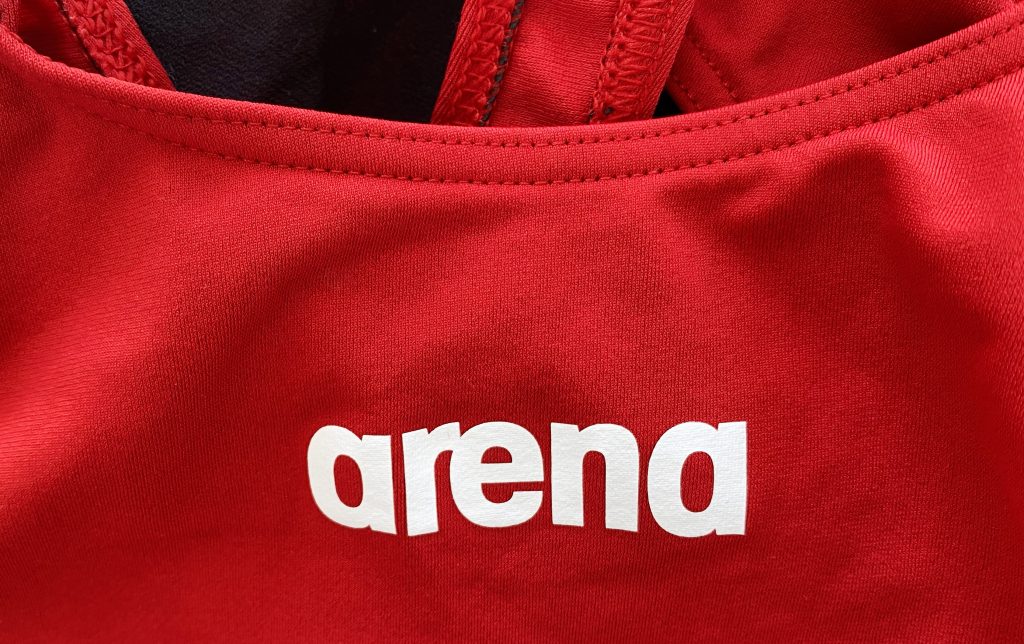
What is the Best Material for a Swimsuit?
Swimsuits are typically made from a variety of fabrics, including nylon, polyester, spandex etc.
While all these fabrics provide excellent water resistance and comfort, they each have their own unique characteristics that can help you better choose the right swimsuit for your needs.
Polyester Swimsuits
Polyester is durable and breathable, so it’s perfect for competitive swimmers or anyone looking to stay cool in the water.
Polyester resists chlorine and retains its shape, so you don’t have to worry about your swimsuit stretching out after long hours in the pool.
Swimsuits that are made of Polyester are durable. They keep their color and shape after regular use in the pool or open water and are chlorine-resistant. The material also features UV protection.
However, please keep in mind, that polyester suits have less stretch than spandex suits, which can lead to a slightly tighter fit.
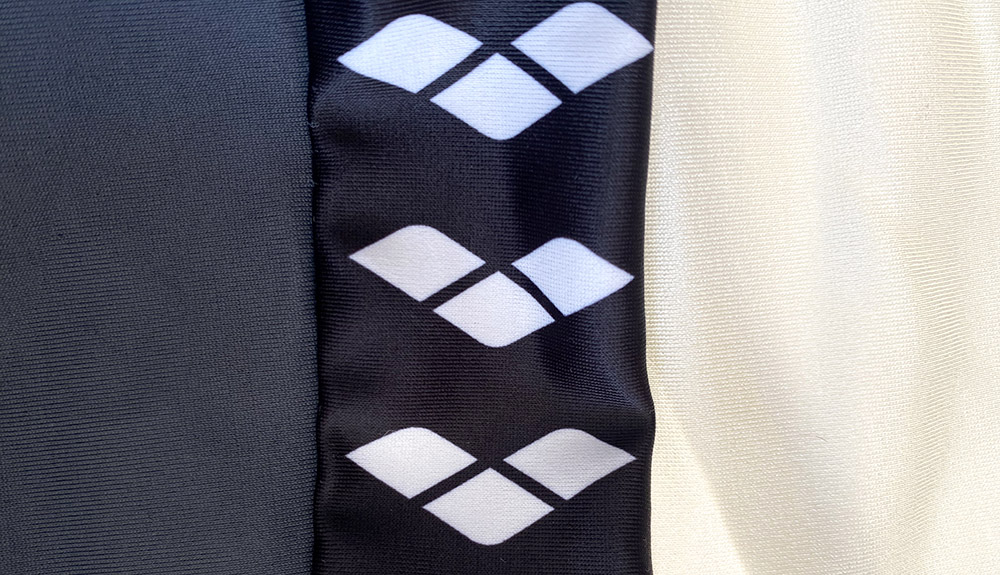
Usually, Polyester swimsuits run small in sizing, so check sizing charts carefully, it’s very likely that you have to pick at least one size bigger than your normal clothing size.
Polyester is definitely a good choice for long-lasting wear and will save you money in the long run, especially if you practice water sports, swim regularly, or participate in competitive swimming.
If you’re a more vocational swimmer, while polyester is still a great choice, you should also take a look at spandex and lycra swimsuits.
Polyamide Swimsuits
Polyamide is the name for the group of fabrics, which are quite close to Polyester in their qualities but are slightly different.
Polyamide fabrics are also used for sports swimsuits and competitive swimwear, they are generally more stretchy and soft, but less breathable.
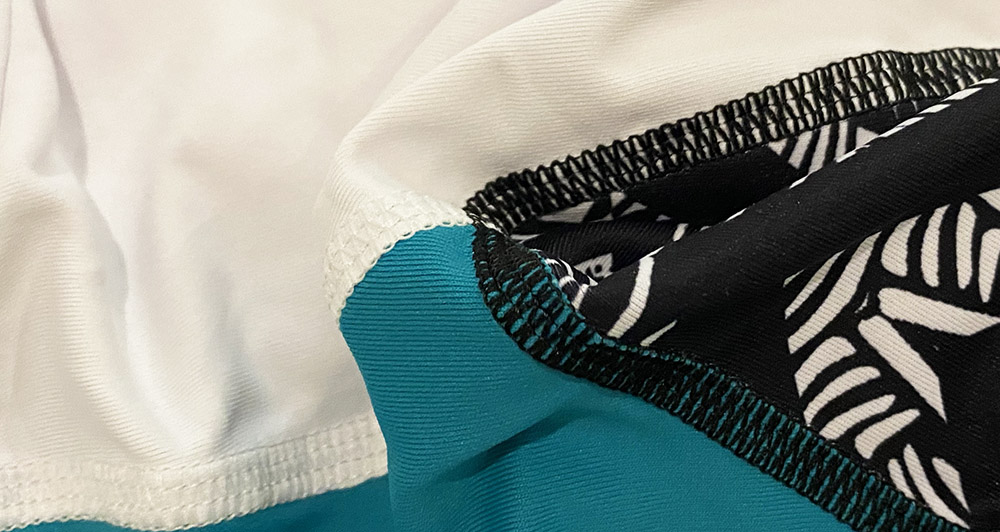
Spandex and Lycra Swimwear
Spandex, which is also well-known under the name Lycra, is flexible, it allows you to move your body comfortably as you swim or lounge on the beach.
It’s also lightweight and great for keeping cool. Lycra features high elasticity, making it a great choice for active recreation, fun swimming, and water activities.
Spandex is definitely a very popular swimsuit material.
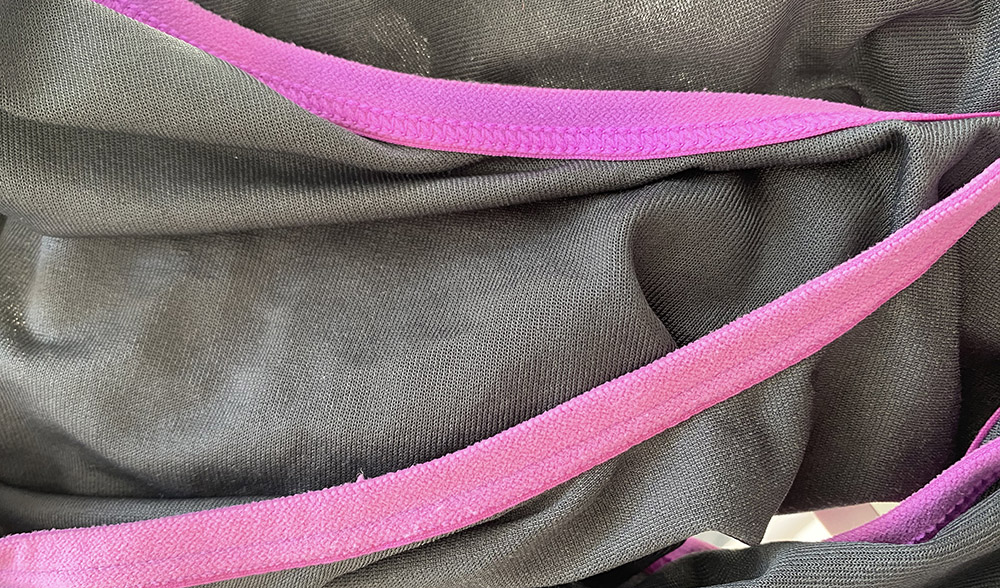
Spandex offers a very good fit. Spandex suits can also be used by competitive swimmers, however, one big disadvantage is that spandex suits are not chlorine friendly.
They can lose their color and shape pretty quickly if used frequently and for long training sessions in the pool.
It is recommended to rinse spandex swimwear in cool water after each use.
Generally, Spandex suits are less expensive than Polyester suits (but it pretty much depends on the brand), so if you’re a recreational swimmer and you’re looking for a nice, quality swimsuit at a mid-range budget level, spandex might be a good choice for you.
Nylon Swimsuit
Nylon is one of the fabrics of the Polyamide group, it is lightweight and strong, making it great for those who want full coverage and a snug fit.
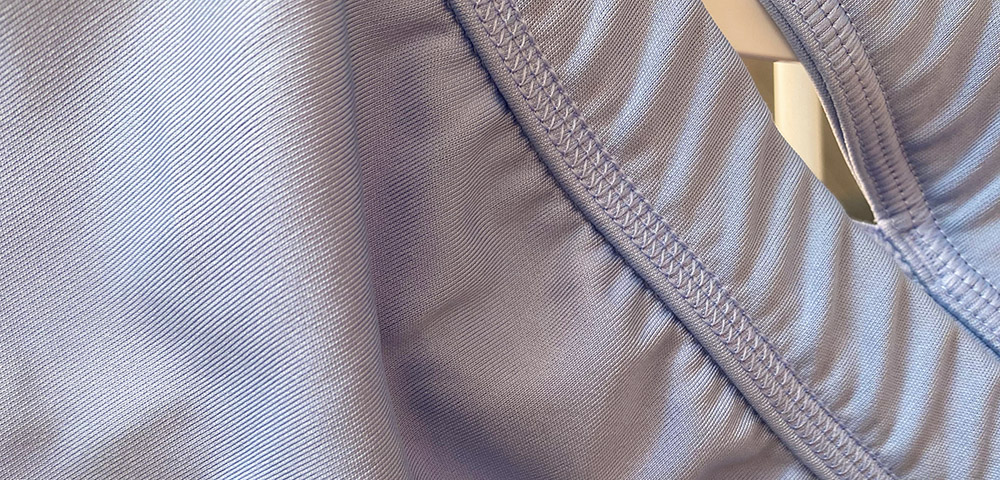
Nylon tends to fade and become brittle after a long UV exposure. It is relatively inexpensive, so you can find good-quality swimsuits at prices that won’t break the bank.
Fastest Drying Swimsuit Material
Microfiber Polyester with moister-wicking properties is very good for recreational and fitness swimmers. Microfiber is popular and not expensive. The famous Nike Dri-Fit series are made of a combination of Microfiber and Polyester.

This fabric more efficiently absorbs water than nylon for example and but it is UV resistant. It is not affected by chlorine pool chemicals.
It weaves and sticks well when worn wet and has a soft touch to the skin.
Polypropylene – a Thick and Scuba Swimsuit Material
Polypropylene swimsuits and not widespread due to their special characteristics. Polypropylene absorbs very little water and it has a low melting point.
This means you should not laze on the beach in a Polypropylene swimsuit, quite the opposite, Polypropylene provides some thermal insulation even immersed in water (the other fabrics don’t provide any).
That’s why it is best worn as cold-weather swimwear. If you like swimming in colder water (below 23C / 73F) it will perfectly serve you, but keep in mind that It is not as warm as a wetsuit though.
Polypropylene is less absorbent and dries faster than both polyester and nylon.
Worst Swimsuit Materials
Linen and Bamboo types of materials are not optimal for swimwear. They don’t stick to the body and change their color when wet, definitely not good to wear in the pool, but at least very nice to wear not-wet in hot weather. Very breathable, but wrinkles easily.
Among the worst options are Cotton and Wool. These fabrics are not suitable for swimwear.
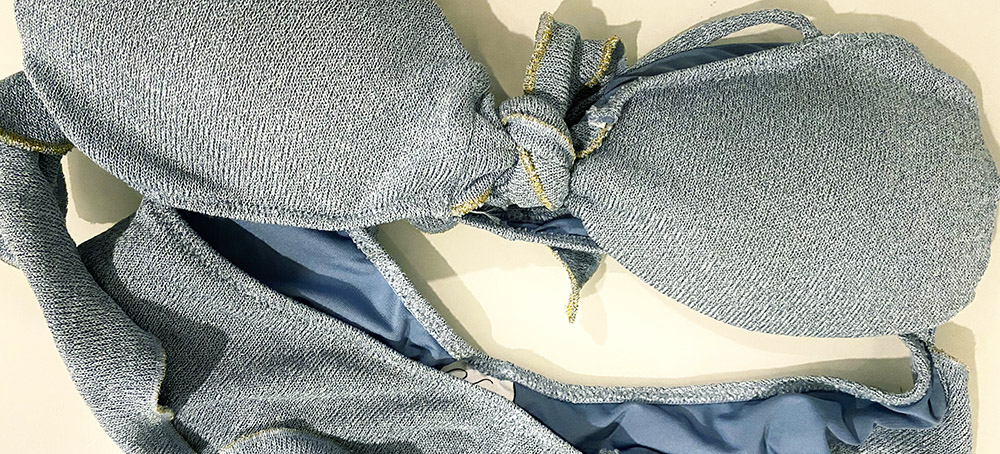
They are very water absorbent, uncomfortable and look clumsy when wet, and very intolerant of chlorine. They fade very fast when used in chlorinated pools.
Although Silk is sometimes used by designers to create some special swimwear pieces, it is only picture-friendly and will be destroyed by chlorine quickly.
What are Speedo swimsuits made of?
Speedo is one of the world’s leading swimwear brands, and its suits are designed to be both stylish and performance-ready.
Many Speedo suits are made from a blend of polyester and elastane, which makes them lightweight yet durable for swimming.
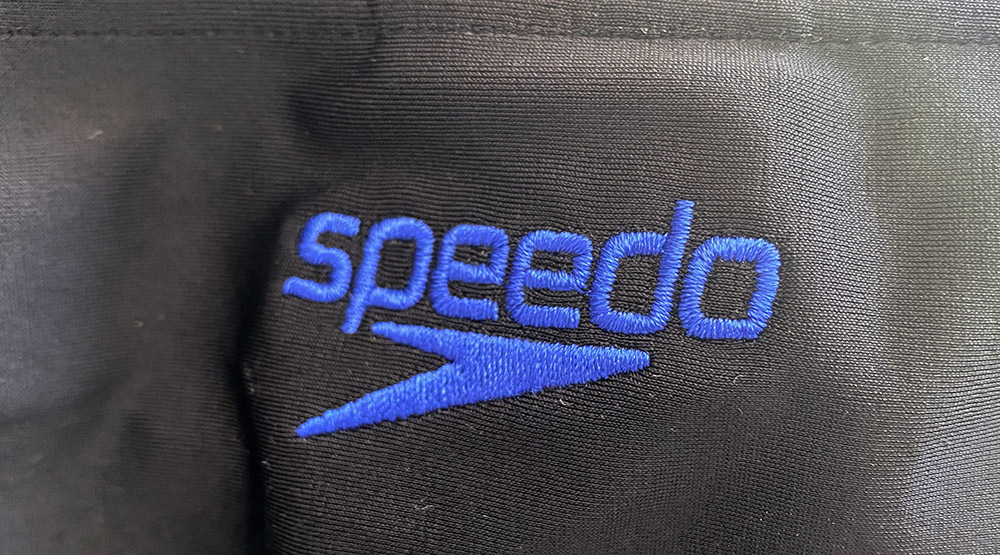
The fabric is designed to be chlorine resistant, so it won’t break down or fade in the pool. Speedo also offers suits made from lightweight fabrics such as nylon and Lycra, which provide a more breathable option for swimmers who want to be comfortable during their workouts.
Some of the higher-end suits are made from 100% polyester fabric, providing even more durability and comfort.
Whether you’re a competitive swimmer or just looking for a stylish suit, Speedo has something to fit your needs.

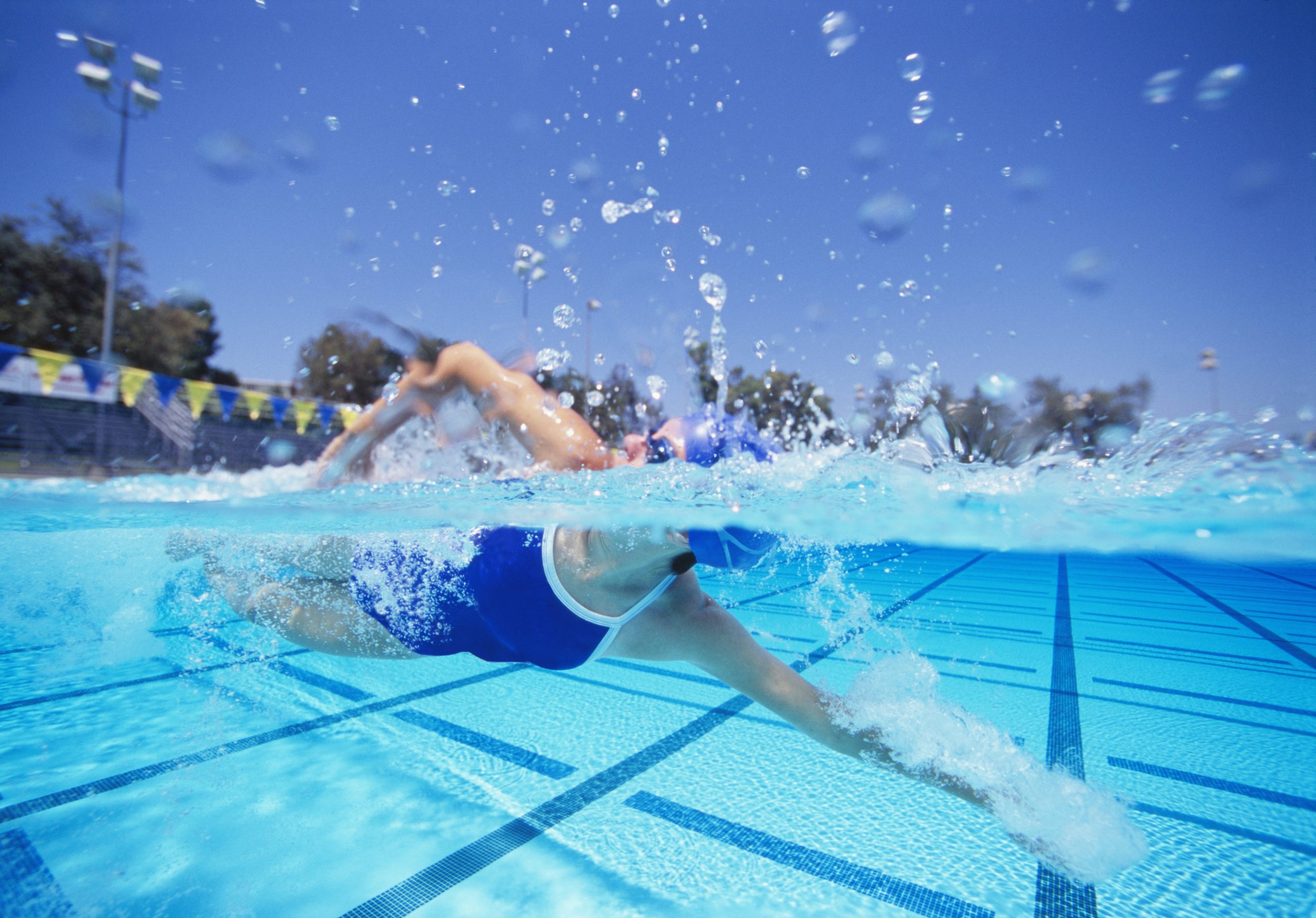
Leave a Reply